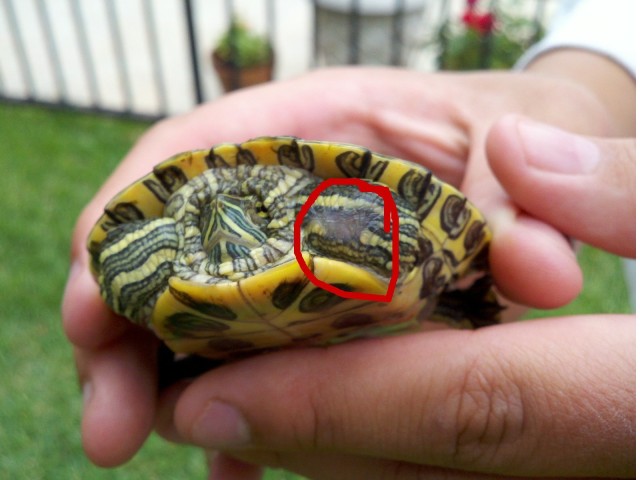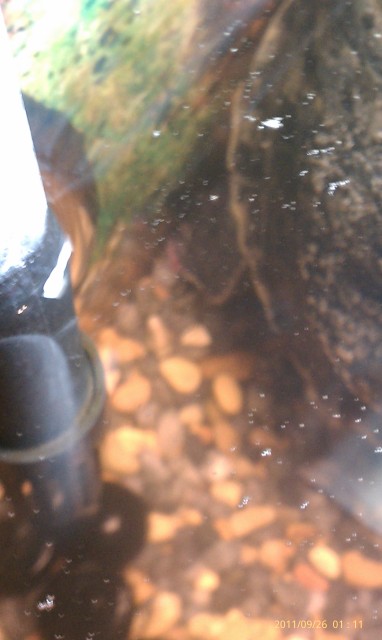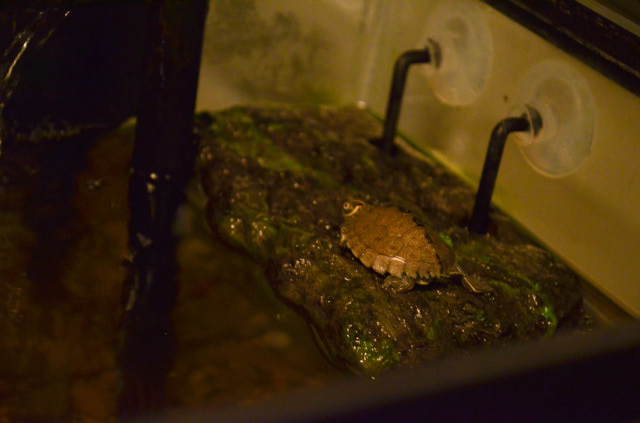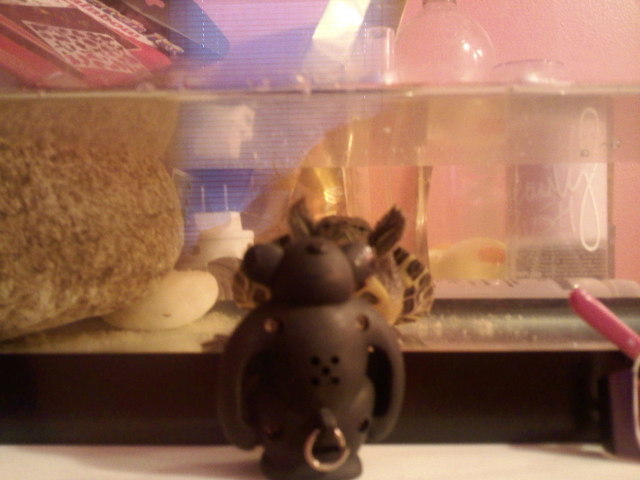QuestionI have had a Russian Tortoise for almost two years now and I'm concerned with multiple things. First off he's about 5 years old I think and hes about 5 inches in length. The tank we bought him is too small for him (24" x 17") so we don't keep him in there much except to bask in his light. His light is a T-rex 100 watt UVHeat bulb. I'm not sure how long he should stay in his light.
The stuff I'm worried about is that all he wants to do all day is sleep. We let him roam around the house and all he will do is walk into a corner, occasionally he digs a little, and then will sleep for endless hours. He wont wake up, not even to eat. I'm also concerned with his diet because he refuses to eat anything but romaine lettuce which I know isn't too great for him but I'm worried he'll starve. He also doesn't eat too much, maybe 3/4-1 leaf each time and I try to feed him at least twice a day. He also refuses to eat on his own. If i put food in front of him, he wont eat and just will go back to sleep. I usually have to hand feed him. Also when he pees there is always white stuff coming out and i was wondering if it is a sign of malnutrition. I'm not sure how I should get him to eat other greens and to eat on his own. I'm worried that he may be unhappy or miserable.
AnswerHi Sam,
The bad news is that you need to make some significant changes for your tortoise's well-being; the good news is that if you're willing to make those changes, you should be able to turn him around. Fortunately tortoises are pretty resilient, and with any luck no long-term damage has been done.
First of all, you need to get him into a proper enclosure. You're right that the tank is too small--much, much too small--but allowing him to roam around the house isn't good, either. He needs constant access to a basking area with a temperature of 90-95 degrees (measured at ground level), as well as a cooler area of 70-75 degrees. It's unlikely that he's getting that from roaming your house. In addition, he needs some moisture in his environment, which he's also not getting from roaming. So...he's probably too cool and dehydrated, for starters. Find something roomy and airy for him--at a pinch, a 50 gallon rubbermaid tub will do, but I'd rather see something larger. You can use an old bookcase turned on its back, build a tortoise table, etc. The more room they have, the healthier they'll be. Idieally, you could build an outdoor pen for spring/summer/fall, and something at least 4' x 3' for indoors.
Next, you need substrate. It's very important that there be some moisture in the enclosure to prevent dehydration. I recommend a 50/50 mix of coir (bed-a-beast/ecoearth) and playsand. Keep it slightly damp at all times (check every few days and add water as necessary). This will help to counteract the drying effect of the heat lamp, which is akin to the desert sun. The substrate should be deep enough for the tortoise to bury itself completely. In addition, make sure there's a shallow water dish that's big enough for the tortoise to get in completely. You should also be soaking your tortoise in lukewarm water for about 15 minutes 2-3 times a week.
The T-Rex bulb is excellent! It gives off good UVB and heat. If it's more than a year old, though, it should be replaced because the UVB levels will diminish over time. It should be on at least 12-14 hours a day to provide enough basking time and UVB (tortoises need UVB in order to properly metabolize calcium). Check the temperature under the lamp to make sure you have a good banking temp (the 90-95 degrees) and adjust the height as necessary (minimum distance should be 12").
OK, now diet. You're right that romaine alone isn't good--nothing by itself is, but romaine is pretty low on the nutritional scale, and tortoise seem to get addicted to it. So start introducing better greens. These can include: turnip, mustard, collards, kale, spring mix (not too much lettuce), prickly pear cactus; weeds such as dandelion, chicory, chickweed, mallow, clover, sow thistle, plantain, hawkbit; flowers such as viola, hibiscus, abutilon, rose petals, grape leaves, mulberry leaves. Make sure anything you pick from your garden, etc. is unsprayed. If you build an outdoor pen you can plant it to provide food for your tortoise to graze on. Also put a cuttlebone in the enclosure so he can nibble on it as needed for extra calcium.
Oh, and the white stuff is urates, which is the solid part of their pee. It's a good indicator for hydration--if it's dry and gritty, the tortoise is dehydration. If soft and creamy, hydration is good. Keeping a tortoise hydrated is extremely important, because over time constant dehydration can lead to bladder stones (an accumulation of urates in the bladder which form a hard, solid mass) which can require surgery to remove.
Sooooo...that's it in nutshell. It may be confusing at first, but once you get a routine down, it's not difficult. You can also go to www.russiantortoise.org and read over the care information there. If you have any questions at all, please post back and I'll do my best to help. Russians are very personable and interesting tortoises, and it's not difficult to keep them healthy once you know what to do. Thanks for wanting to take better care of your tortoise!

 flakey substance on turtles neck and legs
Question
Red ear slider
red ear slider about 9 mos. 20
flakey substance on turtles neck and legs
Question
Red ear slider
red ear slider about 9 mos. 20
 red slider turtle grey spot on arm/elbow
QuestionQUESTION: we have a five year old red slider th
red slider turtle grey spot on arm/elbow
QuestionQUESTION: we have a five year old red slider th
 red ear slider injury
Question
ouch
I found the turtle about 2 years a
red ear slider injury
Question
ouch
I found the turtle about 2 years a
 baby RES is lethargic
Question
Baby, "Harry Potter" Malfoy &n
baby RES is lethargic
Question
Baby, "Harry Potter" Malfoy &n
 tuff turtle
Question
Ichabod
hi, my red ear is a little over a year
tuff turtle
Question
Ichabod
hi, my red ear is a little over a year